Energy Calibration of a CdTe Photon Counting Spectral Detector with Consideration of its Non-Convergent Behavior
Abstract
:1. Introduction
2. Methods
2.1. Choosing Good Pixels of a CdTe PCSD
2.2. Observation of Exposure Dependency of OFF Pixel Fraction
2.3. k-Edge Imaging of Iodine
3. Results
4. Discussion
Acknowledgments
Author Contributions
Conflicts of Interest
Abbreviations
| PCSD | Photon counting spectral detector |
| SPM | Single pixel mode |
| CSM | Charge summing mode |
| DAC | Digital to analog converter |
| FOV | Field of view |
References
- He, P.; Wei, B.; Cong, W.; Wang, G. Optimization of k-edge imaging with spectral CT. Med. Phys. 2012, 39, 6572–6579. [Google Scholar] [CrossRef] [PubMed]
- Bennett, J.R.; Opie, A.M.T.; Xu, Q.; Yu, H.; Walsh, M.; Butler, A.; Butler, P.; Cao, G.; Mohs, A.; Wang, G. Hybrid spectral micro-CT: System design, implementation, and preliminary results. IEEE Trans. Biomed. Eng. 2014, 61, 246–253. [Google Scholar] [CrossRef] [PubMed]
- Lee, N.; Choi, S.H.; Hyeon, T. Nono-sized CT contrast agents. Adv. Mater. 2013, 25, 2641–2660. [Google Scholar] [CrossRef] [PubMed]
- Clark, D.; Ghaghada, K.; Moding, E.J.; Kirsch, D.G.; Badea, C. In vivo characterization of tumor vasculature using iodine and gold nanoparticles and dual energy micro-CT. Phys. Med. Biol. 2013, 58, 1683–1704. [Google Scholar] [CrossRef] [PubMed]
- Roessl, E.; Proksa, R. K-edge imaging in x-ray computed tomography using multi-bin photon counting detectors. Phys. Med. Biol. 2007, 52, 4679–4696. [Google Scholar] [CrossRef] [PubMed]
- Cormode, D.P.; Roessl, E.; Thran, A.; Skajaa, T.; Gordon, R.E.; Schlomka, J.-P.; Fuster, V.; Fisher, E.A.; Mulder, W.J.M.; Proksa, R.; et al. Atherosclerotic plaque composition: Analysis with multicolor CT and targeted gold nanoparticles. Radiology 2010, 256, 774–782. [Google Scholar] [CrossRef] [PubMed]
- Ronaldson, J.P.; Zainon, R.; Scott, N.J.A.; Gieseg, S.P.; Butler, A.P.; Butler, P.H.; Andersonm, N.G. Toward quantifying the composition of soft tissues by spectral CT with Medipix3. Phys. Med. Biol. 2012, 39, 6847–6857. [Google Scholar] [CrossRef] [PubMed]
- Ponchut, C.; Visschers, J.L.; Fornaini, A.; Graafsma, H.; Maiorino, M.; Mettivier, G.; Calvet, D. Evaluation of a photon-counting hybrid pixel detector array with a synchrotron X-ray source. Nucl. Instr. Meth. A. 2002, 484, 396–406. [Google Scholar] [CrossRef]
- Koenig, T.; Schulze, J.; Zuber, M.; Rink, K.; Butzer, J.; Hamann, E.; Cecilia, A.; Zwerger, A.; Fauler, A.; Fiederle, M.; Oelfke, U. Imaging properties of small-pixel spectroscopic X-ray detectors based on cadmium telluride sensors. Phys. Med. Biol. 2012, 57, 6743–6759. [Google Scholar] [CrossRef] [PubMed]
- Guni, E.; Durst, J.; Kreisler, B.; Michel, T.; Anton, G.; Fiederle, M.; Fauler, A.; Zwerger, A. The influence of pixel pitch and electrode pad size on the spectroscopic performance of a photon counting pixel detector with CdTe sensor. IEEE Trans. Nucl. Sci. 2011, 58, 17–25. [Google Scholar] [CrossRef]
- Fiederlea, M.; Greiffenberga, D.; Idarragab, J.; Jakubekc, J.; Kralc, V.; Lebelb, C.; Leroyb, C.; Lordb, G.; Pospsilc, S.; Sochord, V.; et al. Energy calibration measurements of MediPix2. Nucl. Instr. Meth. A. 2008, 591, 75–79. [Google Scholar] [CrossRef]
- Ballabriga, R.; Blaj, G.; Campbell, M.; Fiederle, M.; Greiffenberg, D.; Heijne, E.H.M.; Llopart, X.; Plackett, R.; Procz, S.; Tlustos, L.; et al. Characterization of the Medipix3 pixel readout chip. J. Inst. 2011, 6, C01052. [Google Scholar] [CrossRef]
- Ronaldson, J.P.; Walsh, M.; Nik, S.J.; Donaldson, J.; Doesburg, R.M.N.; van Leeuwen, D.; Ballabriga, R.; Clyne, M.N.; Butler, A.P.H.; Butler, P.H. Characterization of Medipix3 with the MARS readout and software. J. Inst. 2011, 6, C01056. [Google Scholar] [CrossRef]
- Campbell-Ricketts, T.; Das, M. Direct spectral recovery using X-ray fluorescence measurements for material decomposition applications using photon counting spectral X-ray detectors. Proc. SPIE 2014, 9033, 90331D. [Google Scholar]
- Panta, R.K.; Walsh, M.F.; Bell, S.T.; Anderson, N.G.; Butler, A.P.; Butler, P.H. Energy calibration of the pixels of spectral X-ray detectors. IEEE Trans. Med. Imag. 2015, 34, 697–706. [Google Scholar] [CrossRef] [PubMed]
- Das, M.; Kandel, B.; Park, C.S.; Liang, Z. Energy calibration of photon counting detectors using X-ray tube potential as a reference for material decomposition applications. Proc. SPIE 2015, 9412, 941214. [Google Scholar]
- Ballabriga, R.; Alozy, J.; Blaj, G.; Campbell, M.; Fiederle, M.; Frojdh, E.; Heijne, E.H.M.; Llopart, X.; Pichotka, M.; Procz, S.; et al. The Medipix3RX: A high resolution, zero dead-time pixel detector readout chip allowing spectroscopic imaging. J. Inst. 2013, 8, C02016. [Google Scholar] [CrossRef]
- Zeller, H.; Dufreneix, S.; Clark, M.; Butler, P.H.; Butler, A.P.H. Charge sharing between pixels in the spectral Medipix2 X-ray detector. In Proceedings of the IVCNZ 09, Wellington, New Zealand, 23–25 November 2009; pp. 363–366.
- Taguchi, K.; Frey, E.C.; Wang, X.; Iwanczyk, J.S.; Barber, W.C. An analytical model of the effects of pulse pileup on the energy spectrum recorded by energy resolved photon counting X-ray detectors. Med. Phys. 2010, 38, 3957–3969. [Google Scholar] [CrossRef] [PubMed]
- Schlomka, J.P.; Roessl, E.; Dorscheid, R.; Dill, S.; Martens, G.; Istel, T.; Baumer, C.; Herrmann, C.; Steadman, R.; Zeitler, G.; et al. Experimental feasibility of multi-energy photon-counting k-edge imaging in pre-clinical computed tomography. Phys. Med. Biol. 2008, 53, 4031–4047. [Google Scholar] [CrossRef] [PubMed]
- Iwanczyk, J.S.; Nygård, E.; Meirav, O.; Arenson, J.; Barder, W.C.; Hartsough, N.E.; Malakhov, N.; Wessel, J.C. Photon counting energy dispersive detector arrays for X-ray imaging. IEEE Trans. Nucl. Sci. 2009, 56, 535–542. [Google Scholar] [CrossRef] [PubMed]
- Llopart, X.; Campbell, M.; Dinapoli, R.; San Segundo, D.; Pernigotti, E. Medipix2: A 64-k pixel readout chip with 55-μm square elements working in single photon counting mode. IEEE Trans. Nucl. Sci. 2002, 49, 2279–2283. [Google Scholar] [CrossRef]
- Tlustos, L.; Ballabriga, R.; Campbell, M.; Heijne, E.; Kincade, K.; Llopart, X.; Stejskal, P. Imaging properties of the Medipix2 system exploiting single and dual energy thresholds. IEEE Trans. Nucl. Sci. 2006, 53, 367–372. [Google Scholar] [CrossRef]
- Vallerga, J.; McPhate, J.; Tremsin, A.; Siegmund, O. Optically sensitive MCP image tube with a Medipix2 ASIC readout. Proc. SPIE 2008, 7021, 702115. [Google Scholar]
- Roessl, E.; Brendel, B.; Engel, K.-J.; Schlomka, J.-P.; Thran, A.; Proksa, R. Sensitivity of photon-counting based k-edge imaging in X-ray computed tomography. IEEE Trans. Med. Imag. 2011, 30, 1678–1690. [Google Scholar] [CrossRef] [PubMed]
- Cassol Brunner, F.; Dupont, M.; Meessen, M.; Boursier, Y.; Ouamara, H.; Bonissent, A.; Kronland-Martinet, C.; Clémens, J.; Debarbieux, F.; Morel, C. First k-edge imaging with a micro-CT based on the XPAD3 hybrid pixel detector. IEEE Trans. Nucl. Sci. 2013, 60, 103–108. [Google Scholar] [CrossRef]
- Kalluri, K.S.; Mahd, M.; Glick, S.J. Investigation of energy weighting using an energy discriminating photon counting detector for breast CT. Med. Phys. 2013, 40, 081923. [Google Scholar] [CrossRef] [PubMed]
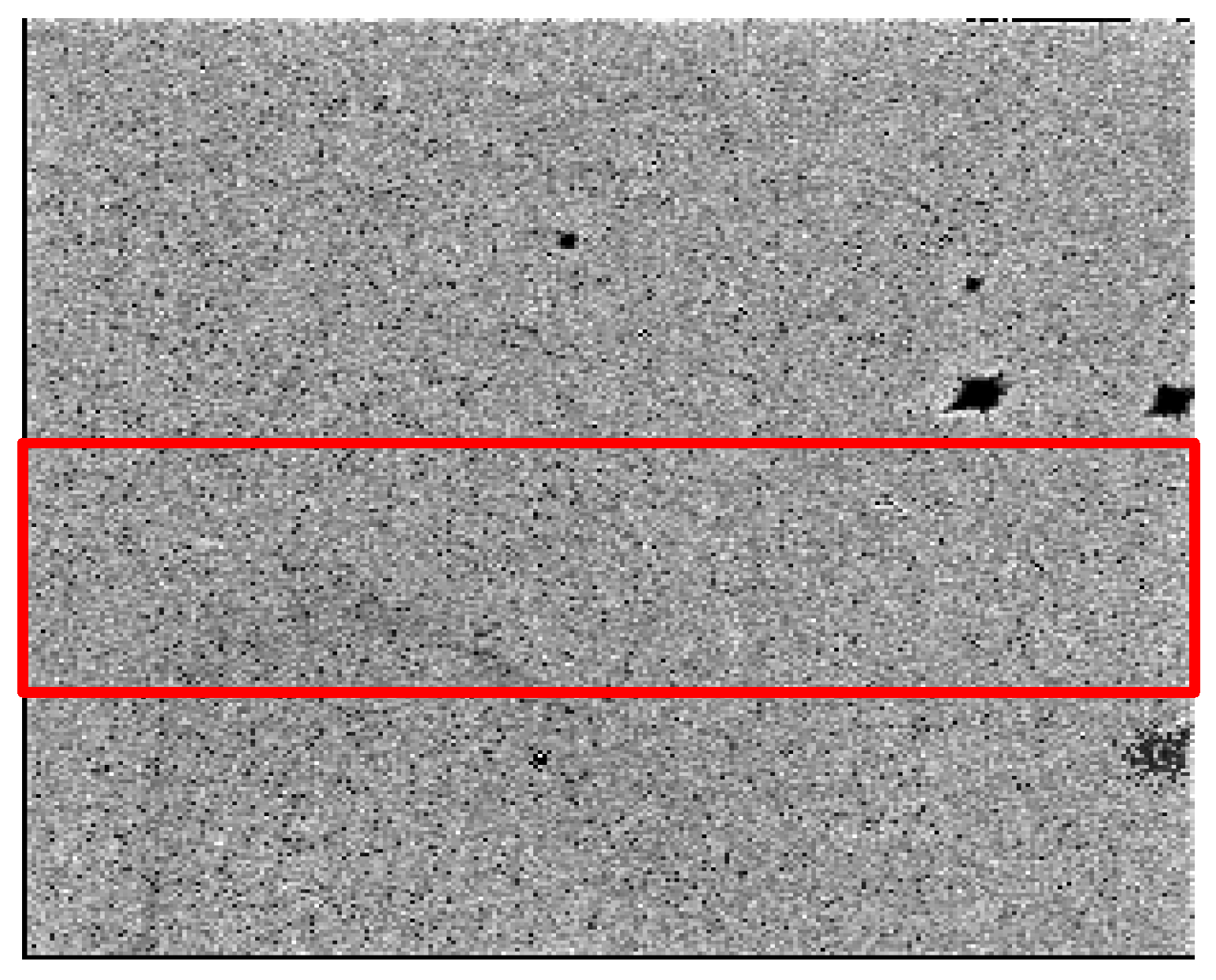
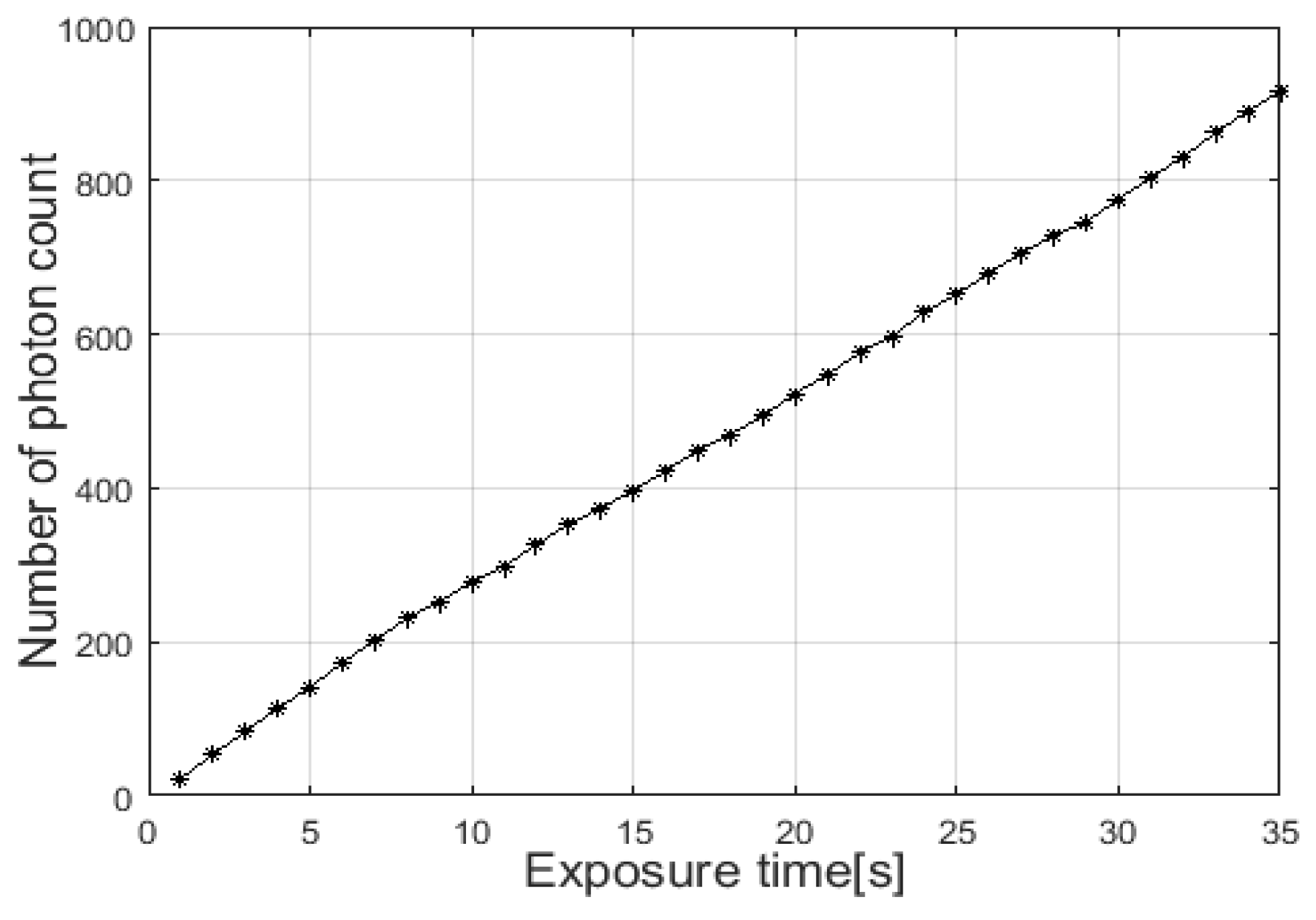
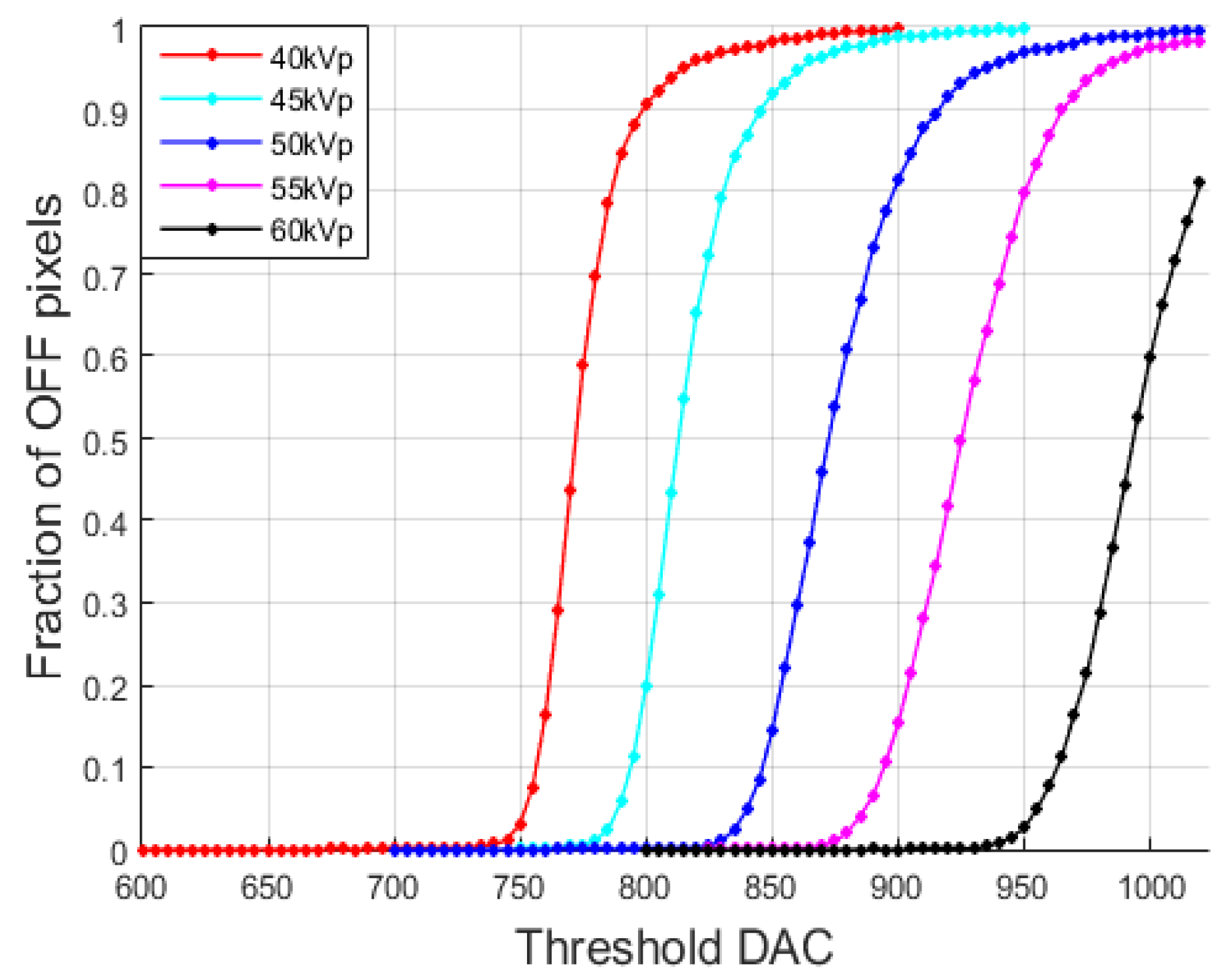
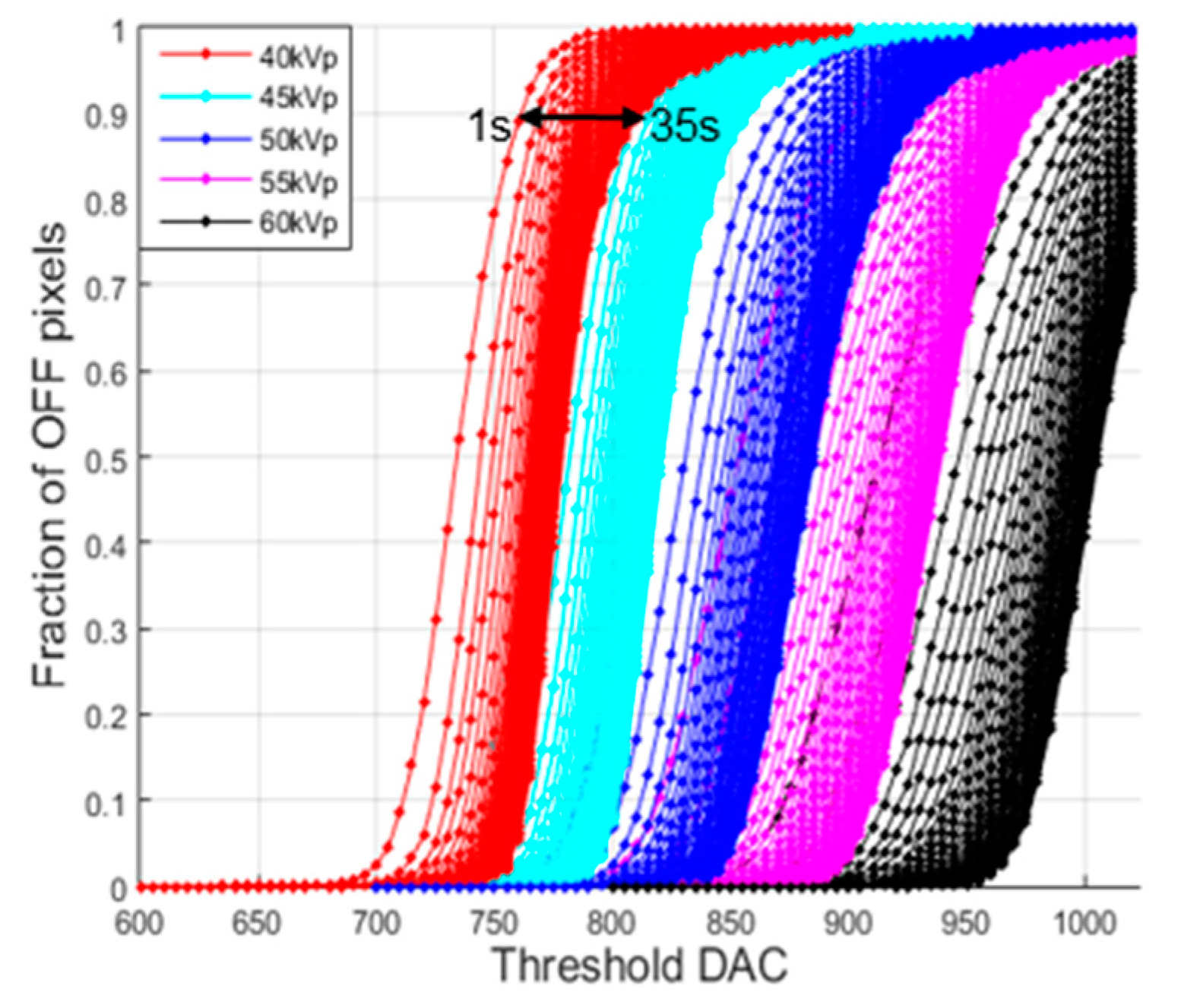

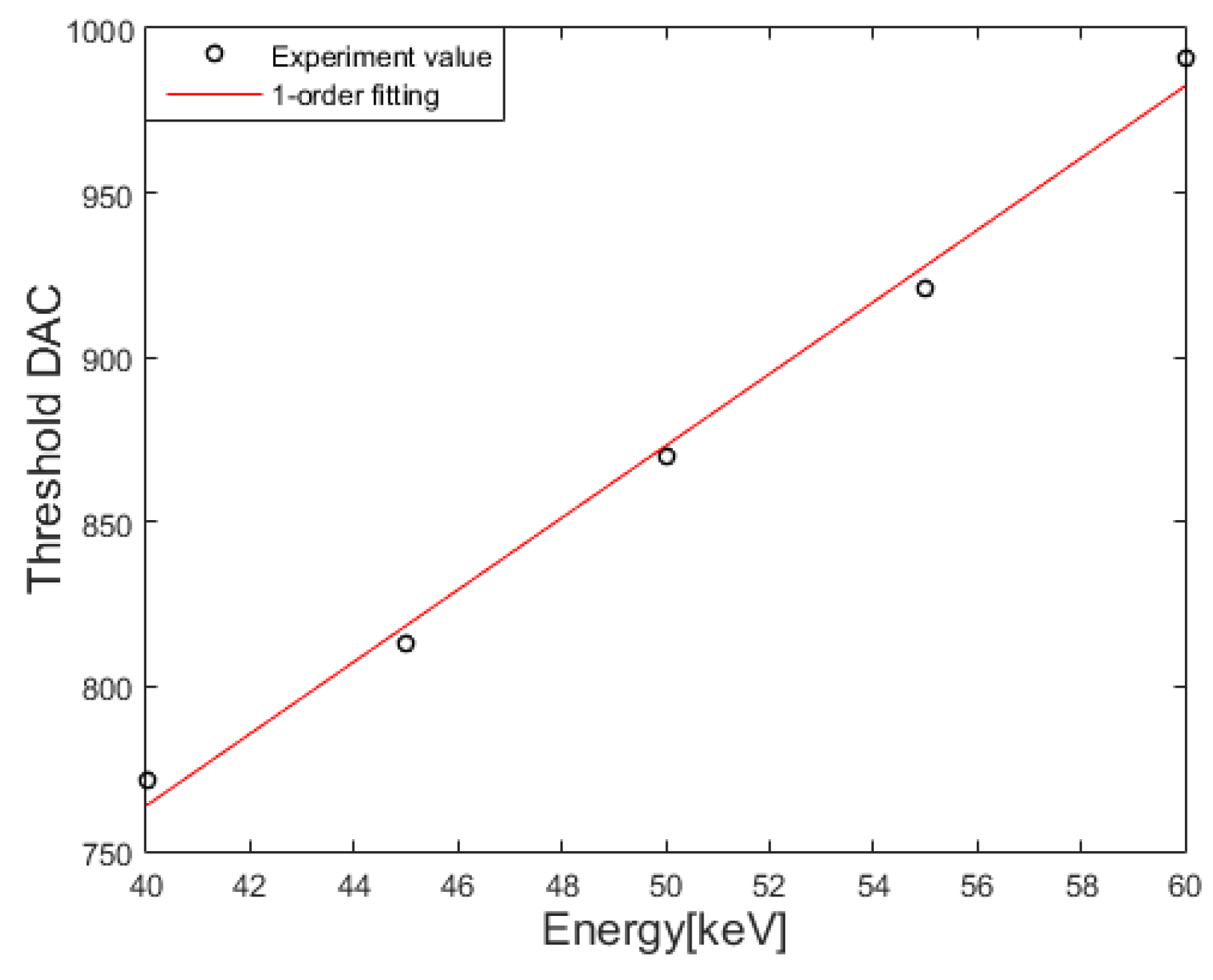
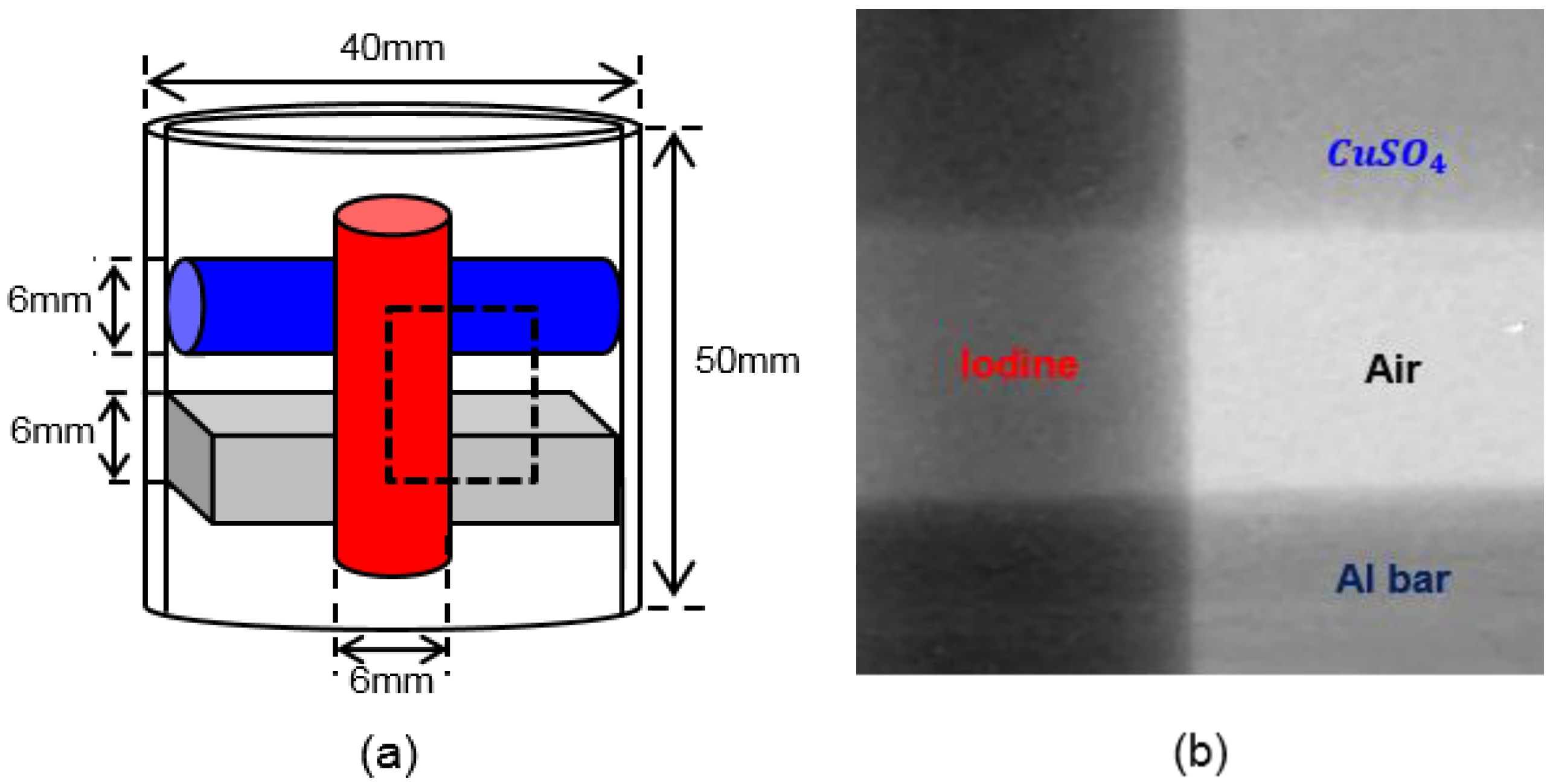

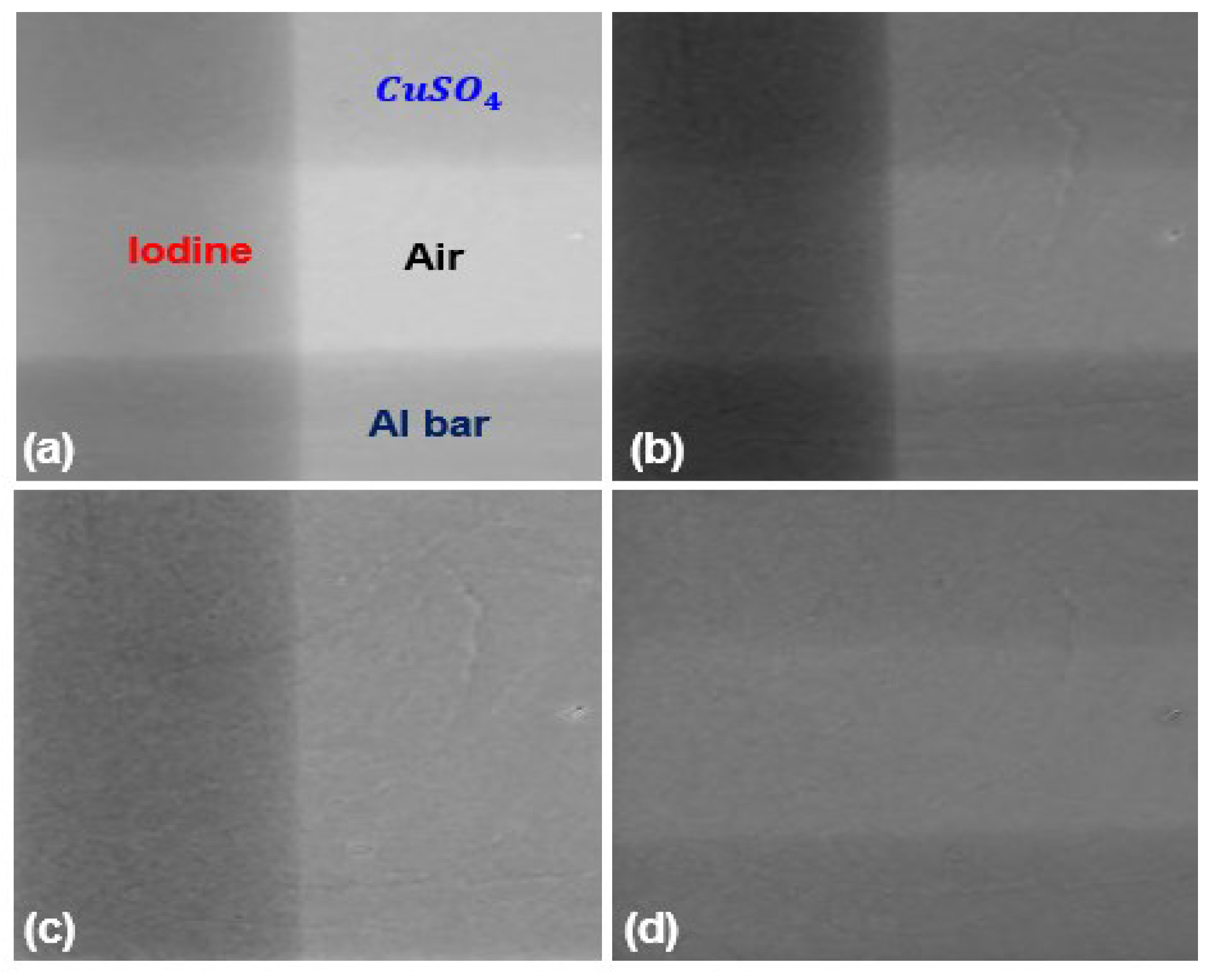
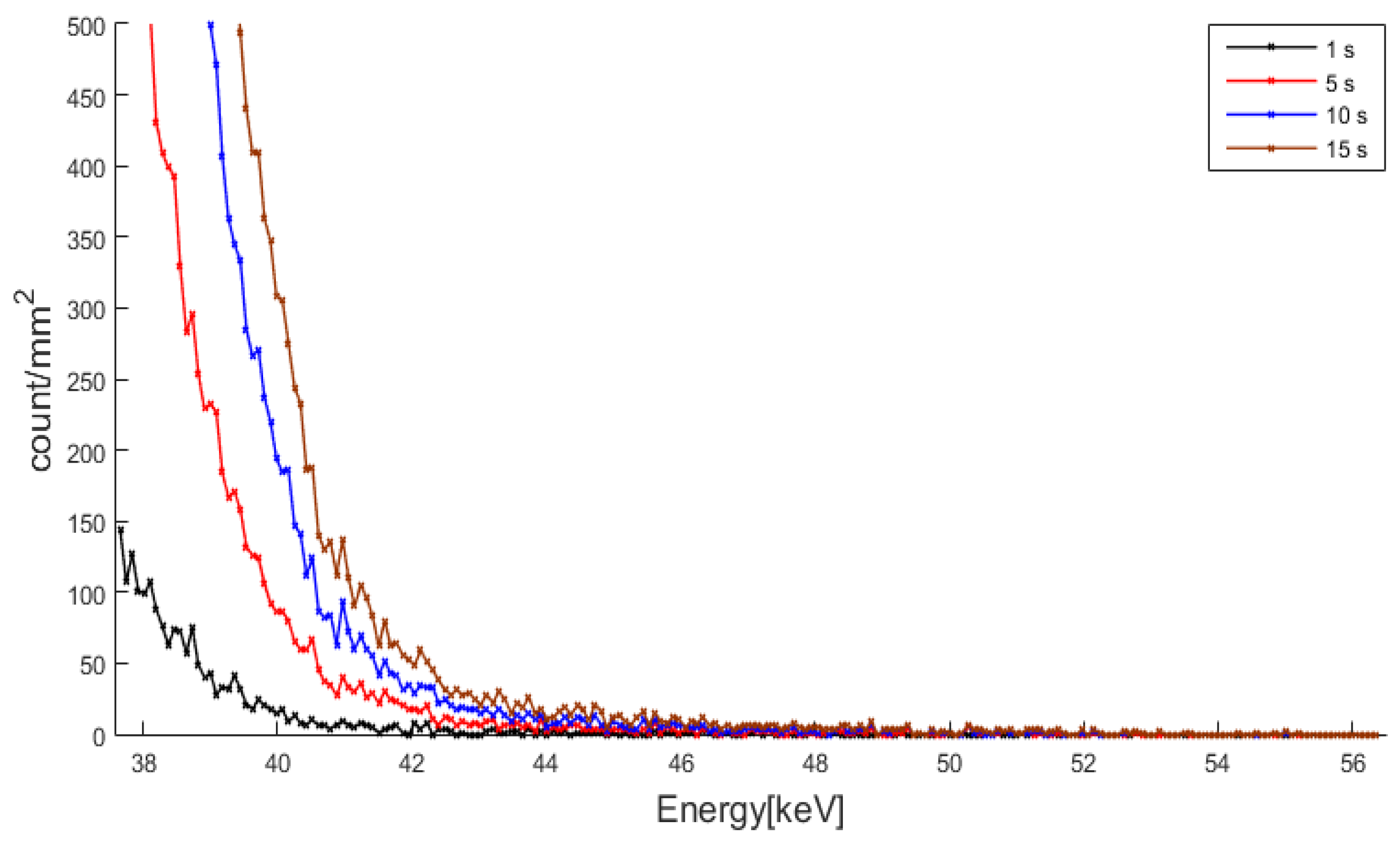
| Tube Voltage (kVp) | Tube Current (μA) | Mean of Photon Counts | Variance of Photon Counts |
|---|---|---|---|
| 40 | 490 | 232.0 | 252.2 |
| 50 | 313 | 395.6 | 419.7 |
| 60 | 217 | 570.0 | 582.4 |
| 70 | 160 | 735.5 | 796.1 |
| 80 | 122 | 892.0 | 843.8 |
| Exposure Time in Deriving Mapping Function | Estimated Iodine k-Edge (keV) | Error (%) |
|---|---|---|
| 1 s | 35.61 | 7.36 |
| 30 s | 32.58 | 1.78 |
| 22 s at 40, 60 kVp | 33.27 | 0.48 |
| 23 s at 45, 55 kVp | ||
| 24 s at 50 kVp |
© 2016 by the authors; licensee MDPI, Basel, Switzerland. This article is an open access article distributed under the terms and conditions of the Creative Commons by Attribution (CC-BY) license (http://creativecommons.org/licenses/by/4.0/).
Share and Cite
Lee, J.S.; Kang, D.-G.; Jin, S.O.; Kim, I.; Lee, S.Y. Energy Calibration of a CdTe Photon Counting Spectral Detector with Consideration of its Non-Convergent Behavior. Sensors 2016, 16, 518. https://doi.org/10.3390/s16040518
Lee JS, Kang D-G, Jin SO, Kim I, Lee SY. Energy Calibration of a CdTe Photon Counting Spectral Detector with Consideration of its Non-Convergent Behavior. Sensors. 2016; 16(4):518. https://doi.org/10.3390/s16040518
Chicago/Turabian StyleLee, Jeong Seok, Dong-Goo Kang, Seung Oh Jin, Insoo Kim, and Soo Yeol Lee. 2016. "Energy Calibration of a CdTe Photon Counting Spectral Detector with Consideration of its Non-Convergent Behavior" Sensors 16, no. 4: 518. https://doi.org/10.3390/s16040518
APA StyleLee, J. S., Kang, D.-G., Jin, S. O., Kim, I., & Lee, S. Y. (2016). Energy Calibration of a CdTe Photon Counting Spectral Detector with Consideration of its Non-Convergent Behavior. Sensors, 16(4), 518. https://doi.org/10.3390/s16040518






